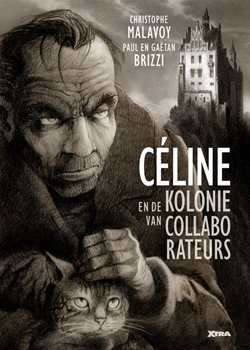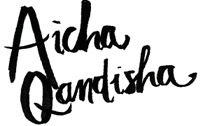The Best Comics of 2016
Peter Breedveld

All books on this year’s list except one are pretty dark. Maybe I should change my reading diet. The days I shaped my worldview by reading Spirou & Fantasio and Donald Duck are long past.
There are a few series that certainly qualify as the very best I’ve read last year, and the years before that. Every year I buy the new trade paper backs of these series to catch up (my city doesn’t have a good comics store anymore so buying the monthly installments has become too complicated) but including them in my top ten would result in more or less the same list every year and what would be the point of that, right?
These series are, among others, Saga by Brian K. Vaughan and Fiona Staples, Descender by Jeff Lemire and Dustin Nguyen, Love & Rockets by the fabulous Hernandez brothers.
Also there’s a big pile of books from 2016 that I didn’t come around to reading yet. There’s just too few hours in a day and I waste too many hours sleeping.
There is only one woman on my list. This bothers me somewhat. I cherish female comic authors, they often have a sensitivity men haven’t. But many of the comics by women I read this year I just didn’t like that much. For instance, there were raving reviews for Monstress, a fantasy series by Marjorie Liu and Sana Takeda that I found abhorrent and I sort of liked Ghosts by Raina Telgemeier, which is a New York Times bestseller and everything, but certainly not enough to count it among the best I’ve read.
I did read some good comics by women though, but they were not published in 2016.
Anyway, on to my list of best comics of last year:
10: Tom Hart: ‘Rosalie Lightning‘

Tom Hart is the husband of Leela Corman, who makes heartfelt sensuous comics about the female suffering. His work I was less familiar with, although I may have read some of his self-published work in the nineties.
In 2011 they lost their daughter Rosalie Lightning, who wasn’t even two years old. It was a completely unexpected death, but in his book Hart wonders if he and his wife did not just miss all the signs announcing her premature passing. He looks for meaning in the films she liked, the book he read her, the toys she played with, her changing habits. He even deplores having her named ‘Lightning’, as in a lightning bolt that suddenly strikes and is then gone. Even the car accident a friend was involved in a day after her death is seen by him as somehow related to his daughter.
A large part of this book consists of images he charges with a kind of dark magic with his words. I must say this is very powerful stuff. The night after I read it I had very strange nightmares and when I woke up, I did not dare to fall asleep again.

9: Nele Sys: ‘Het Wijfje‘

Probably not a book you’ll be reading in the train, because it has a tampon dangling from it. ‘Het Wijfje’ (‘The Female’) is the debut of Flemish illustrator Nele Sys. It’s a compilation of jokes, observations and memories of a young woman – probably Sys herself – coming to terms with her own sexuality and going through all the awkwardness of having her first period and having sex for the first time, and so on.
These are candid, disarming, slightly provocative but wholly good-natured confessions, probably also influenced by that other Flemish cartoonist, Ilah, who is less merciful, especially towards men, whem mocking sexual relationships.

8: Daniel Clowes: ‘Patience‘

Patience is an intricate philosophical science fiction thriller. Oh, and a love story too, about a man trying to save his murdered wife by traveling through time. It’s weird and touching and clever with drawings that verge on psychedelic pop art. It’s typically Clowes, but very unlike anything he’s done before.

7: Thierry Smolderen and Alexandre Clérisse: ‘l’Eté Diabolik‘

Diabolik is an Italian pulp crime comic that was popular in the sixties and seventies. A dark series written and drawn by two women with a criminal as its main protagonist. l’Eté Diabolik is a pun of some kind because you could translate it as A Diabolical Summer but it really means The Summer of Diabolik. In the book two French adolescents are fascinated by the character Diabolik, who somehow turns out to be a key figure – or so it seems – in the horrific events they find themselves in de midst of one summer in the early sixties, a year after the murder on the American president Kennedy.
What follows is a dark thriller in which nothing is what it appears to be, nobody is who he says he is and the main protagonist finds the time to lose his virginity in the process.
The story is drawn in a typical sixties style, with playful, curvy lines and vibrant colours, giving the whole the feel of a The Saint movie, situated the south of France. Sultry, sexy and of course with a soupçon of French existentialism.

6: Alejandro Jodorowsky & José Ladronn: ‘Les Fils d’El Topo ‘

Like the number one of this list, this book is based on a film script that nobody wanted to burn his hands on. In this case it’s the sequel to Jodorowsky’s legendary film El Topo from 1970, about a black clad rider, accompanied by his completely naked young son, who has to complete several works in order to become some kind of God.
Like the film this book has the look of a western, with a lone rider dressed in black, Mexican bandits and down-trodden villagers in a desert-like decor. But this is really more of a Greek tragedy or a religious story from the Torah, about the naked son of the rider in El Topo, cast away by his father and now, all grown up, out for revenge by killing his brother.
Jodorowsky is an amazing storyteller but the true gem of this book is the artist, José Ladronn. His art is fine and crisp, in the tradition of the great Spanish comic artists of the seventies but less flamboyant, not as baroque. A lust for the eye.

5: Christophe Malavoy & Paul and Gaëtan Brizzi: ‘Céline en de Kolonie van de Collaborateurs ‘

Originally titled La Cavale du Dr Destouches, which sounds more Célinesque than the Dutch translation, which has a Spike & Suzy-like ring to it, this is the improbable but true story of French writer Louis Ferdinand Céline (real name Destouches) who tried to escape from Paris to Denmark at the end of the Second World War, fearing the wrath of his fellow Parisians for he was a noted anti-Semite, although he did help the French resistance and even Jewish refugees during the occupation.
He and his wife (who is still alive and a 104 years old) and a friend of his, the actor Robert le Vigan, ended up in a German health resort of some kind near the Swiss border, surrounded by Nazis and members of the French Vichy regime, who collaborated with the Nazis.
Paul en Gaëtan Brizzi, who are noted animation artists, translate Célines feverish and surrealistic prose perfectly into their amazing drawings, which sometimes are hyper realistic, then oddly cartoonish, whatever a certain scene or a particular situation demands.
The story, based on Céline’s so-called German Trilogy, is a cruel, dark, coarse comedy verging on grotesque slapstick. It’s fast and virtuous, impeccably written with jaw-dropping art. To me one of the surprises of the year.

4: Jaime Martín: ‘Jamais je n’aurai 20 ans‘

This is the story of Jaime Martin’s grandparents who were active socialists before and during the Spanish Civil War. Martin’s grandfather fought in that war, lost and then he and his wife had to survive, which they managed rather well, gathering used bottles of all kind and then cleaning and selling them.
A large part of this book deals with their life after the war, harassed and blackmailed by the police and raising their daughters in a society where people, who opposed each other in a bloody war, not always succeed in tolerating each other during a time of relative peace.
Martín draws in a style reminiscent of the Clear Line of Tintin author Hergé, which contrasts heavily with the sometimes gruesome events depicted in this book. He succeeds in conveying the suffocating atmosphere of suppressed fear and smouldering hate that dominated in Spain for a long time after the war, even for a long time after the death of dictator Franco.
It’s a heavy book, but not devoid of humour and also very touching. A worthy monument of his courageous grandparents, who always found ways to persevere, despite all the misery thrown on their way.

3: Dave McKean: ‘Black Dog‘

Dave McKean is one of the greatest comic authors of all time. I believe he is best known for his legendary cover art for Neil Gaiman’s Sandman comic from the nineties, but his own comic stories are intricate, poetic and graphic master pieces which measure with the finest in comic art, such as Little Nemo and Moebius.
Black Dog is about surrealist painter Paul Nash, who served in the British army during World War I. McKean tells the story of his youth, his time as a soldier and the way the war affected him in hallucinatory sequences. The different stories grasp into each other but are each told in a completely different style, retaining their own characteristic, yet forming a coherent whole.
Beautifully drawn and painted, obtrusively written, this is an ambitious work and one of McKean’s masterpieces.

2: Alan Moore and Jacen Burrows: ‘Providence act 1‘

I think we have the new From Hell here. Providence is based on the works of cult horror writer H.P. Lovecraft. Moore takes us into a world of demons and fishmen, just barely hidden below the surface of Grant Wood’s iconic painting American Gothic or, if you will, Martha and Jonathan Kents Smallville, the all-American town where Superman grew up.
Providence is about a journalist in New York taking time off to write a novel. He travels to New England in order to find an ancient Arab book on the occult, ‘Kitab Al-Hikmah Al-Najmiyya’, the ‘Book of the Wisdom of the Stars’. During his journey he experiences one bizarre nightmare after the other.
This book is a compilation of the first four issues of Providence. It is obviously thoroughly researched and full of references to real and fictitious characters, events and places. This website contains a large compendium of every little detail in each panel of the series.
Providence is dark and eery and has exactly that nightmarish, delirious atmosphere of the Lovecraft stories.
The art by Jacen Burrows is a bit stiff at times. The man uses a ruler more than I care for but it’s clear and crisp and the colouring adds an extra layer to the already multi-layered story.

1: Ethan Hawke and Greg Ruth: ‘Indeh‘

Actor Ethan Hawke, who also writes novels and film scripts, wrote a script about the wars of the American army against the Apaches. He never got a studio interested – too expensive, the subject matter too controversial – so he approached illustrator Greg Ruth to turn it into a graphic novel.
Ruth did not slavishly follow Hawkes script but added his own vision, the two did extensive research and the result is a dark western, a tragedy, in somber greys and stark whites.
This is the story of Apache leaders Cochise and Geronimo, who went into the history books as the ruthless killers of innocent civilians and brave soldiers. The truth is – of course – more complicated. These Apaches would now be branded terrorists but really defended their people against the insatiable American hunger for land and gold.
Betrayal by the white man is what made these men what they were. Reading Indeh one can’t help but be reminded of the injustices suffered now by other black-haired people, who are taken prisoner and executed without trial, whose land is being stolen and whose dignity is being crushed by the same American government that virtually wiped out the indigenous Americans.
While most westerns play against a background of the hard yellows and stark browns of the New Mexican and Texan desert towns, Indeh almost seems to take place in a world filled with damp fogs, a sort of ghost world where the characters are doomed to do their deeds over and over again. It is extremely well executed, with intricate, fluent sequences, natural dialogues and beautiful, atmospheric art.

Comics, Lists, Peter Breedveld, strips, 11.01.2017 @ 08:48
3 Reacties
op 11 01 2017 at 09:14 schreef Han van der Horst:
Ik ga die strip over Celine kopen. Het zal wel een soort verstripping zijn van Van het Ene Kasteel naar het andere, een inderdaad verbijsterend boek. Céline was fout en niet zo’n beetje ook en hij sloot zich dus aan bij Pétain en de zijnen, die na de bevrijding van Frankrijk in Sigmaringen een regering in ballingschap vormden. Kijk hier eens naar. De moeite waard. https://www.youtube.com/watch?v=f1C5QTdKhBw
op 12 01 2017 at 09:22 schreef DJ:
Hmm…dat ziet er toch weer zeer aantrekkelijk uit. Al jaren houd ik me niet meer bezig met strips, maar die fils d’el Topo, die over Celine en Providence ga ik zeker even bekijken in de winkel.
Eigenlijk is niets lekkerder dan op de bank met een flesje goeie port en een stapel strips.
op 12 01 2017 at 15:25 schreef Pep:
Toch verrassend wat ik als stripliefhebber toch gemist heb in 2016. Ga proberen er zo snel mogelijk iets aan te doen.






 RSS
RSS